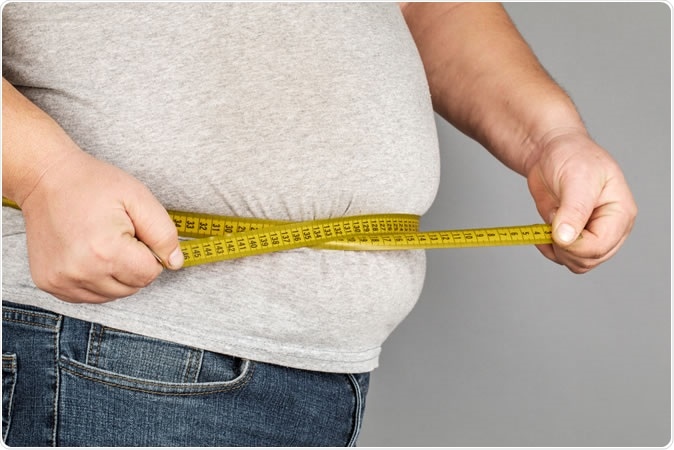In 1919, the First World War was just over, and people in America were beginning to revel in the unaccustomed luxuries of sugar, flour, butter and eggs after the war restrictions. Naturally, candy and cake consumption shot up, with people freely snacking on these sweet foods in between meals. Just a bite here and there, nothing much – so it was believed that the added calories would fade into relative insignificance. It was at this time that an editorial titled Candy and Calories was published in the journal JAMA to focus attention on the actual caloric value of ice cream, soda, candy, and other extremely popular American ‘extra’ foods.
The author pointed out that many such foods are eaten quite frequently in 500-calorie portions, while 100-calorie titbits are extremely common. He went on to offer a still more systematic overview of “The Energy Content of Extra Foods”, in the same year.

Image Credit: Fuss Sergey / Shutterstock
Astonishing caloric content of snacks
The authors of the article titled “The Surprising Caloric Value of Dainties Eaten Between Meals”, which was published exactly a hundred years ago in JAMA, point out that one single hard candy can give calories enough to let the individual walk a whole mile, while three olives – just plain olives – supply fuel for a half-mile. Again, just five large olives, six walnuts, less than a half-doughnut – any of these would let a man traverse the whole Washington Monument without having to call on his body’s energy resources at all!
With this in mind, it is easy to understand how a gentle 200 m walk once a day is quite insufficient to deal with the immense number of extra calories being sneaked in a morsel at a time. Or perhaps, it will help us to deal with such foods as a reserve, to help deal with times of true energy depletion caused by hard muscle work. The authors quip: “Possibly the doughnut will gain a repute as a standby in times of muscular stress and thus retain in peace the unique favor that it won through the efforts of the Salvation Army in the days of military stress.”
Failure to learn from history
This insight was arrived at by simple observation and calculations a hundred years ago. Yet today obesity rates in the US have shot up, from a massive 46% of adults in 1946 – just 27 years later – to an incredible 75% in 2010. And it’s still rising. What does that tell us about how we learn from experience, even from our own experience, with food?
Many studies have established that it’s not just a specific food group, but the overall diet choices that cause weight gain and obesity. Sugars and refined flours, potatoes, sugary drinks, red and processed meat, trans fats and saturated fats – these are all sources of excessive calories that add up to increased weight. An additional problem with drinking a sweetened drink is that it doesn’t typically leave you feeling full, so you go on to have a ‘proper’ meal thereafter without adjusting for the extra calories obtained through the drink.
On average, an adult American eats 20 teaspoons of sugar every day. Where do all these extra calories go? It is worth noting that in 2014, a JAMA: Internal Medicine study found that those who ate a lot of sugar, such as one fifth of their daily calories, had an almost 40% increased risk of dying due to heart disease, compared to those who had 8% or less of daily calories from sugar.
The link is quite plausible in the light of what we know about the conversion of excessive sugar into fat molecules for storage – with a consequent increase in body weight, blood pressure, blood cholesterol levels, and type 2 diabetes – all of which increase the chances of atherosclerosis, or hardening of the arteries, leading to cardiovascular disease.
And even if it doesn’t cause any of these conditions, obesity is linked independently to a higher risk of heart failure.
Obesity and economics
The fact remains that poverty is a driver of obesity in a developed country, though not in low-income countries. This is due to the fact that refined flour, sugar, and fats, when used in food, make it taste good at a lower cost in these richer countries, compared to the cost of more nutritious foods. As a result, these energy-dense foods tend to be chosen by the lower-income consumer, which explains why obesity is always predominantly found in groups with lower education, minority groups, and poor localities.
Implications
Over the last three decades, snacking has only increased in dimensions, to the point that snacks make up almost 30% of total calories in children. Most snacks are salty, fatty, or sweet – or have all three. If people are given larger portions they tend to eat more, leading to more calories being consumed, and weight gain. And if they are offered food more frequently, the same thing can happen. Efforts to reduce obesity should therefore begin with restricting snacking, both with respect to the number and the portion size.
Journal reference:
The Surprising Caloric Value of Dainties Eaten Between Meals. JAMA. 2019;322(19):1928. doi: https://doi.org/10.1001/jama.2018.15605